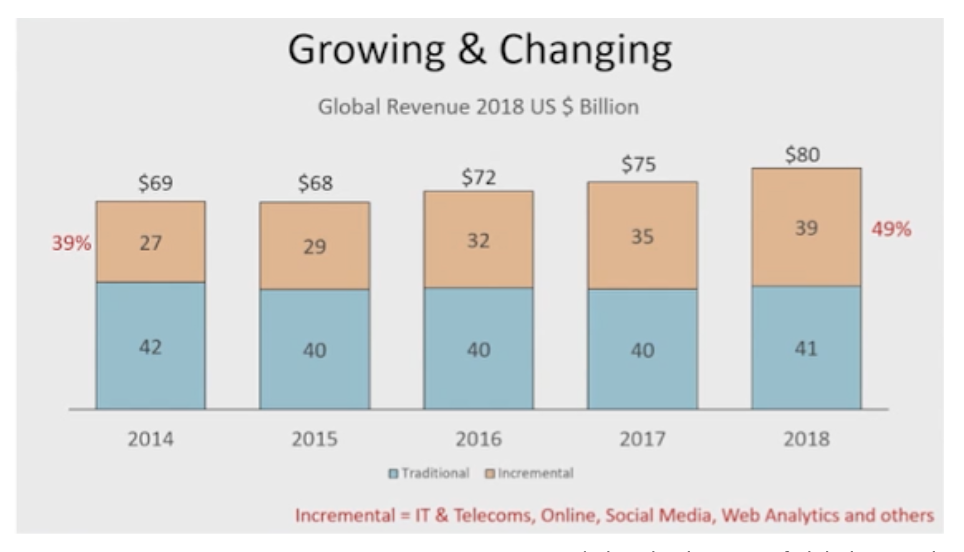Editor’s Note: This post is part of our Big Ideas series, a column highlighting the innovative thinking and thought leadership at IIeX events around the world. Wim Hamaekers will be speaking at IIeX Europe 2020 in Amsterdam, Feb. 25-26. If you liked this article, you’ll LOVE IIeX Europe. Click here to learn more.
About two years ago, Tony Costella from Heineken posted a compelling piece on the GreenBook Blog, ‘Everybody Lies”. Intriguing and at the same time a clear call to action for all of us, researchers at agency or client-side, to address the fact that people lie, unintentionally or not. We trust people’s claims about their feelings or behavior, whilst they are often clueless. Tony’s message: we should build a toolbox with new approaches and methods, and add behavioral measures to our way of working.
‘No Question Research’ – passive and automated data collection; behavioral, transactional or social media data, etc – provides an answer to many of these challenges and is booming in the past decade. This becomes clear when we look at the revenue spend in the industry. Deep diving into the Global Market Research Report 2019, Ray Poynter has pointed out that ‘No Question Research’ represents already half (39 US$ billion) of the revenue spend in 2018, a steady increase over time (+44% growth vs 2014) and the sole contributor to the growth of our industry.

‘No Question Research’ is on the rise and is there to stay. It’s based on pure data streams or observations and in one way or another it is directly derived from real consumer behavior, giving us a vast amount of (passively collected) data. Whether it’s word of mouth, click behavior, shop behavioral measures through sensors, sharing moments in the consumers’ life; letting go frustration in Instagram stories…, and that makes it so valuable. No questions are asked.
With the speed technology is evolving, more data streams will become available and will be used to tap into people’s behavior in order to learn, understand & predict better. And with this, it’s likely that non-question research and analytics (AI & predictive modeling) will take a more prominent place in the blend of sources that will be used in the data and insights industry.
Digitizing How People Behave & Buy
As an example, look at the online retail industry. There is a consensus about the fact that a unique and engaging customer retail experience is the way brick-and-mortar stores can add value to the consumer journey. Although data analytics have become the norm to uncover the online customer journey, the practice is still in its infancy in the offline world. In the digital space, e-commerce companies use big data and artificial intelligence to predict and influence online customer behavior without the customer even being aware. In the digital space, something as seemingly trivial as changing the color or location of the “buy” button on a website has a direct impact on sales. Enabling companies to set clear goals and KPI’s on every single element of the digital shop journey. Online, consumer behavior is monitored closely and tracked continuously resulting in a data lake, enabling the creation of algorithms to predict consumer behavior, set clear KPI’s and conduct A/B testing. No questions asked.
Compared to the digital space, brick-and-mortar retail stores live in the analytical dark ages and rarely consider customer behavior data and metrics, other than sales. So why does physical retail not follow suit? The truth is very few retailers know exactly how the shopper experience in their stores really works and what makes their customers tick.
Why? Because at best, companies conduct shopper studies to question people about their shop experience, observe them and try to understand how to create impact. But it’s simply impossible for people to tell you exactly how and why they behaved in a certain way. Data collected through sensors is giving an objective answer to that; non-disputable clear objective behavioral data streams.
At IIeX Europe, I will showcase how sensor data (GDPR compliant) will give insights possible store layout optimizations and merchandise productivity, based on real consumer behavior. On top of this, the technology is used to measure and understand store marketing performances, even labor management, and proactive loss prevention, or sales and traffic predictions through artificial intelligence.
Non-Question Research, the Holy Grail?
Of course, ‘No Question Research’ is just one of the many elements in the mix. But for sure, there will be a clear elimination of waste (eg nonrelevant researches, questions which people can not answer) and focus on the right blend of methods, tools and data streams. In fact, the deep understanding of the ‘why’ will still be covered by qualitative (question) research and will alongside the rise of ‘No Question Research’ grow, to make the vast amount of data insightful & relevant.
